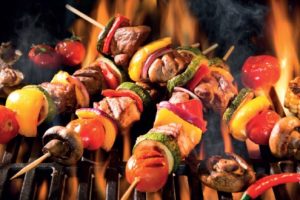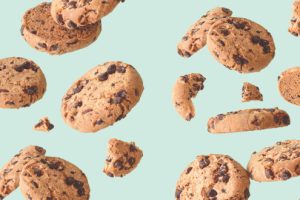In the convenience sector alone, total hot beverages are worth £294m, a figure that is up by 2.8% year on year. Hybrid working, economic concerns and increasing numbers of people going teetotal are all contributing to the success of this category.
Café culture
However, consumer expectations of what’s on offer have increased significantly. Influenced by café culture, shoppers are looking to recreate the out-of-home experience at home.
It’s cheaper and it’s more convenient – especially if you are working from home. So these days it’s all lattes, Americanos, macchiatos, chai, herbal teas and so on.
Not only do shoppers have higher expectations, they are also willing to pay more, which is good for brands and retailers alike.
Juliette McConnell, demand accelerator controller at Jacobs Douwe Egberts, says: “The influence of coffee shop trends continues to grow and make its way into households, with 65% of consumers looking for coffee-shop-quality drinks to enjoy in the comfort of their own homes.

Trading up
“Consumers are trading up on their weekly shop with products that allow them to easily recreate their favourite coffee shop experiences. This trend is being proven through the immense growth within the specialities and mixes segment.
In fact, we have seen an increase in spend in June 2023 compared with June 2022 on soluble specialities, gaining greater penetration than any other in the last six years, with the segment now worth more than £215m.”
What’s more, these products are recruiting younger shoppers and further expanding the category.
The trend for drinking less is also drawing in a more youthful demographic as many consumers, especially Generation Zs, are ditching the pints for a chai latte. Also, the money saved on booze means consumers can splash out on a more-expensive hot drink.

Inflation bites
As hybrid working booms, the at-home hot beverage opportunity is growing even further. The post-Covid novelty of visiting cafés has dissipated and increasing numbers of consumers are saving their pennies and going back home.
In fact, the at-home trend is predicted to be the biggest competition ground for different styles of hot drinks and cold brews in the UK as inflationary pressures bite.
“With the cost-of-living crisis, we know there is continued pressure on household spending,” adds McConnell. “Consumers are looking at how they can make simple switches to save money – including swapping their coffee shop visit for a delicious version at home.
“With over half of coffee consumers drinking instant coffee at home in the UK and 81% of in-home coffee cups being made using soluble products, it’s clear there is still a demand to provide consumers with great-tasting instant.”
Coffee pods
In the UK, we now drink approximately 98 million cups of coffee per day. According to the UK Coffee Association, 80% of UK households buy instant coffee for in-home consumption, particularly those aged 65 and older.
Ground coffee and single-serve coffee pods are becoming increasingly popular, particularly among millennials, who account for 16% of all buyers.
With the coffee category now worth more than £1.5bn and about 24 million households in the UK buying coffee, the demand for retailers to stock a diverse range across the category has never been more important in this channel – especially as convenience and independent retailers continue to lead growth for the sector.
Green tea
Tea is the most popular drink consumed in Britain today, with more than 100 million cups drunk every day. The tea sector is worth £83m in convenience, forming 28% of the hot beverages category.
There is some evidence of premiumisation within tea, with speciality tea bags and speciality leaf tea both outperforming standard tea.
However, standard still accounts for more than 80% of sales. Fruit and herbal teas cater for a different type of shopper and this is now the second biggest segment in tea, accounting for 13% of all sales. Green tea has an extremely loyal shopper base and commands 4% of all tea sales.

Horlicks Tablets
Hot chocolate, meanwhile, is no longer purely a seasonal product. Instead, it has become an all-year-round purchase, with brands accounting for 77% of the overall category.
“That’s why it’s important for retailers to stock leading brands,” says Michelle Frost, general manager at Mars Chocolate Drinks &Treats. “Retailers are looking to maintain the growing demand for variety among shoppers, while still offering much-loved existing products.”
Brand extensions
Having witnessed several flavour trends since the pandemic, including nostalgia in particular, Horlicks has responded with some unique brand extensions, such as its pudding flavours, which include Cherry Bakewell, Apple Pie and Banoffee Pie.
Rebekha White, brand manager at Aimia Foods, says: “We have seen some very encouraging and positive results for Horlicks this last year, with recent data revealing that buyers are up a notable 10% and UK household penetration is also up by 9.2%.
“This is a great win for the malted category, particularly as we’re also seeing increased shoppers within younger demographics.”

Caffeine consumption
Wellness is a trend that is continuing and a growing number of Brits are looking to cut back on caffeine, with almost a third being wary about their caffeine consumption.
While some segments have seen a decline, total decaf value sales have remained in growth; decaf is worth £4.8m and has seen a 6.4% increase within the convenience channel. One in five coffee drinkers now regularly opt for decaf, according to a report by market analyst Mintel.
With such a wide variety of hot beverages to consider stocking, the general advice for independent retailers is to carry a diverse range from trusted and familiar brands and ensure good availability so your customers aren’t tempted to go elsewhere.
———————————————————————————————————————————————————-
Tea facts
- The tea sector is worth £83m in convenience, making up 28% of the category.
- Convenience delivers strong growth for tea, which is up 3.8% in convenience.
- Convenience drives sales value growth across all tea sectors, outperforming the market and gaining share.
Coffee facts
- Coffee forms 66% of the hot beverages category, worth £194m, and is growing by 2.3% in convenience.
- Instant coffee makes up 74.4% of coffee sales within the convenience channel.
- Roasted and ground coffee forms 11% of the category and is worth £34m to the convenience channel.
Hot chocolate
- Total hot chocolate and malted drinks are worth £19.3m, with sales growth of 6% and unit growth of 4.7%.
In numbers
80% say brand is key when choosing coffee
77% of hot chocolate purchased is branded
13% of tea sales are fruit and herbal varieties
 Talking Retail Grocery and product news for independent retailers
Talking Retail Grocery and product news for independent retailers






